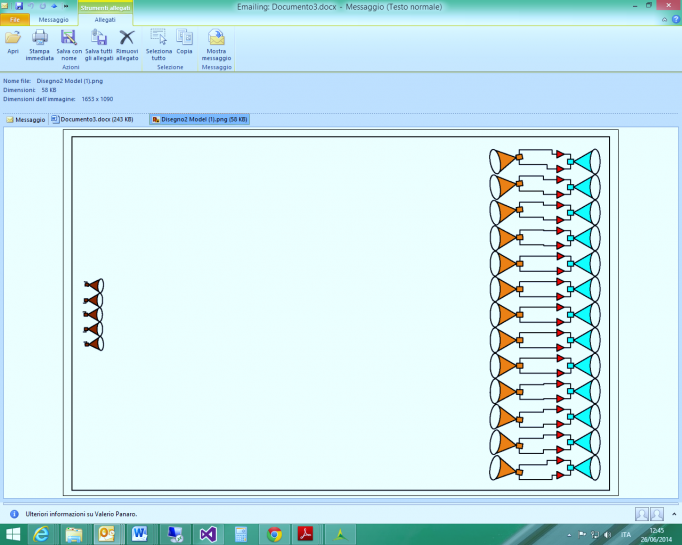
-
StatusOngoing
-
Status date2015-10-15
To design a Tx Ka-band discrete lens antenna able to generate a multibeam coverage with a single aperture. The proposed active lens antenna has demonstrated a significant reduction in terms of complexity, mass and costs with respect to the current solution based on a multi-reflector system. A proof of concept demonstrator model, including 28 active radiating elements, has been designed, manufactured and tested.
SYSTEM ARCHITECTURE
A Tx discrete lens is composed by two arrays both with N radiating elements. One array (front array) faces the free space and the other (back array) faces the primary feeds placed on the focal region. The elements of the front array are connected with the corresponding elements of the back array via transmission lines and SSPAs as shown in the following picture.

During the activity a Tx active lens for a Ka-band Inmarsat-like multibeam application with 1.75° spot beams and based on a secondary payload with a DC power consumption of only 4 kW has been designed. The system uses a four colour reuse scheme and is able to radiate 13 active beams, with an EIRP of 55 dBW, selected between 121 spot beams of the Earth global coverage.
The active lens is made of 218 active elements each one radiating both circular polarization by means of two GaN SSPAs. Both the front and the back array are aperiodic to simplify the RF chain inside the discrete lens. A thermal control system with only 27 heat pipes and 4 loop heat pipes has been designed to dissipate the heat power dissipated by the active components. A supporting structure with high modulus carbon fibers was designed to limit the antenna mass budget.
The active lens antenna guarantees maximum flexibility in terms of RF power distribution over the service area according to the changes of traffic distribution during the satellite operative timeframe.
Volume and mass are reduced respect to the current multibeam antenna configurations based on multi-reflector systems.
As the failure of a lens SSPA introduces only a graceful degradation of electrical performance, the active discrete lens does not require amplifier redundancies.
Differently from a phased array solution, its complexity increases in a little appreciable manner when increasing the number of coverage spot beams.
The activity has been divided in two contractual phases. Phase 1 included trade-off between several discrete lens architectures, selection of the overall antenna architecture and preliminary design of the demonstrator. Phase 2 concerned the detailed analysis and design of the Tx on-board antenna together with the manufacturing, integration and testing of the demonstrator shown in the following picture.
The development phase of the active discrete lens for multibeam applications can be classified now with a Technology Readiness Level (TRL) of 4.




